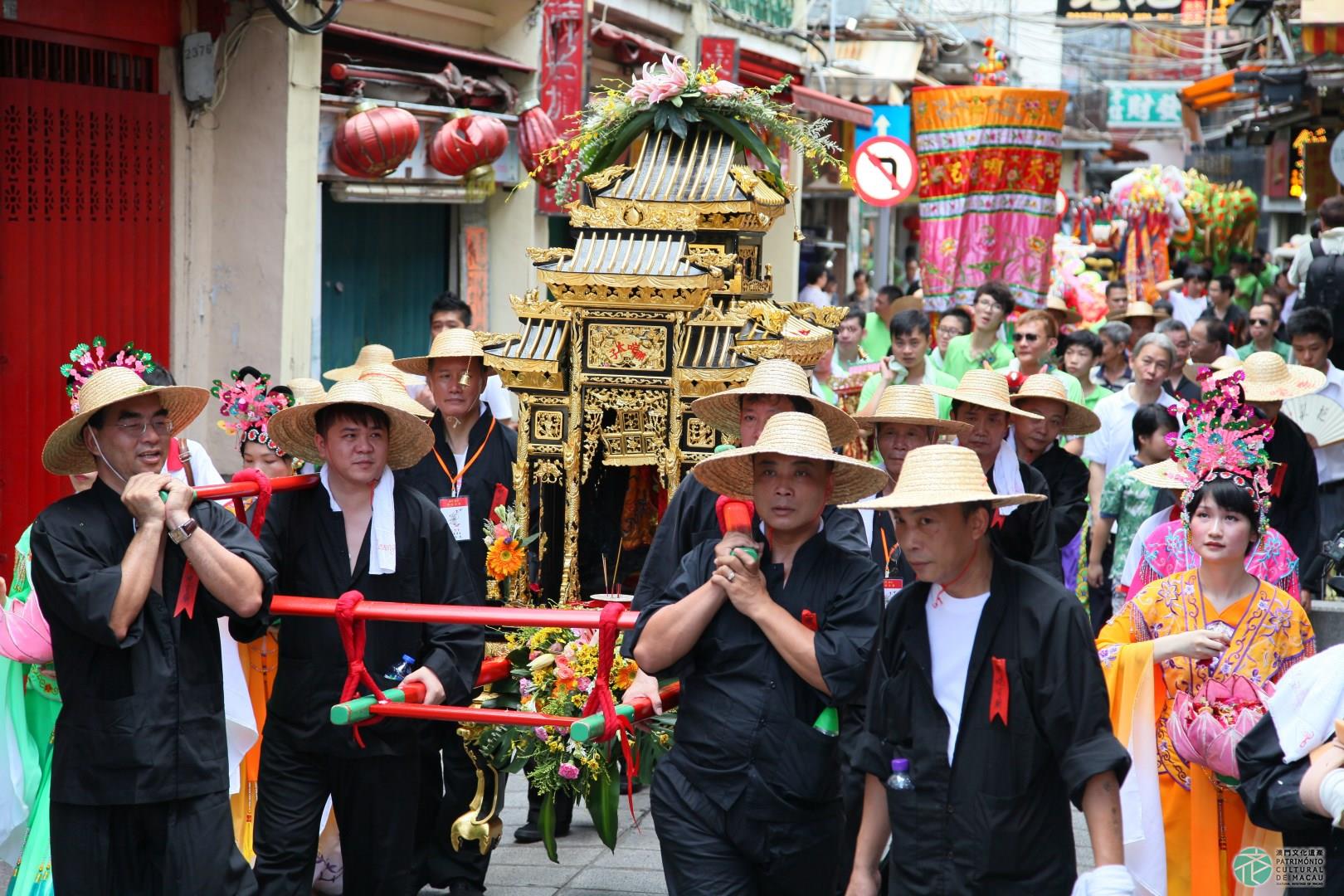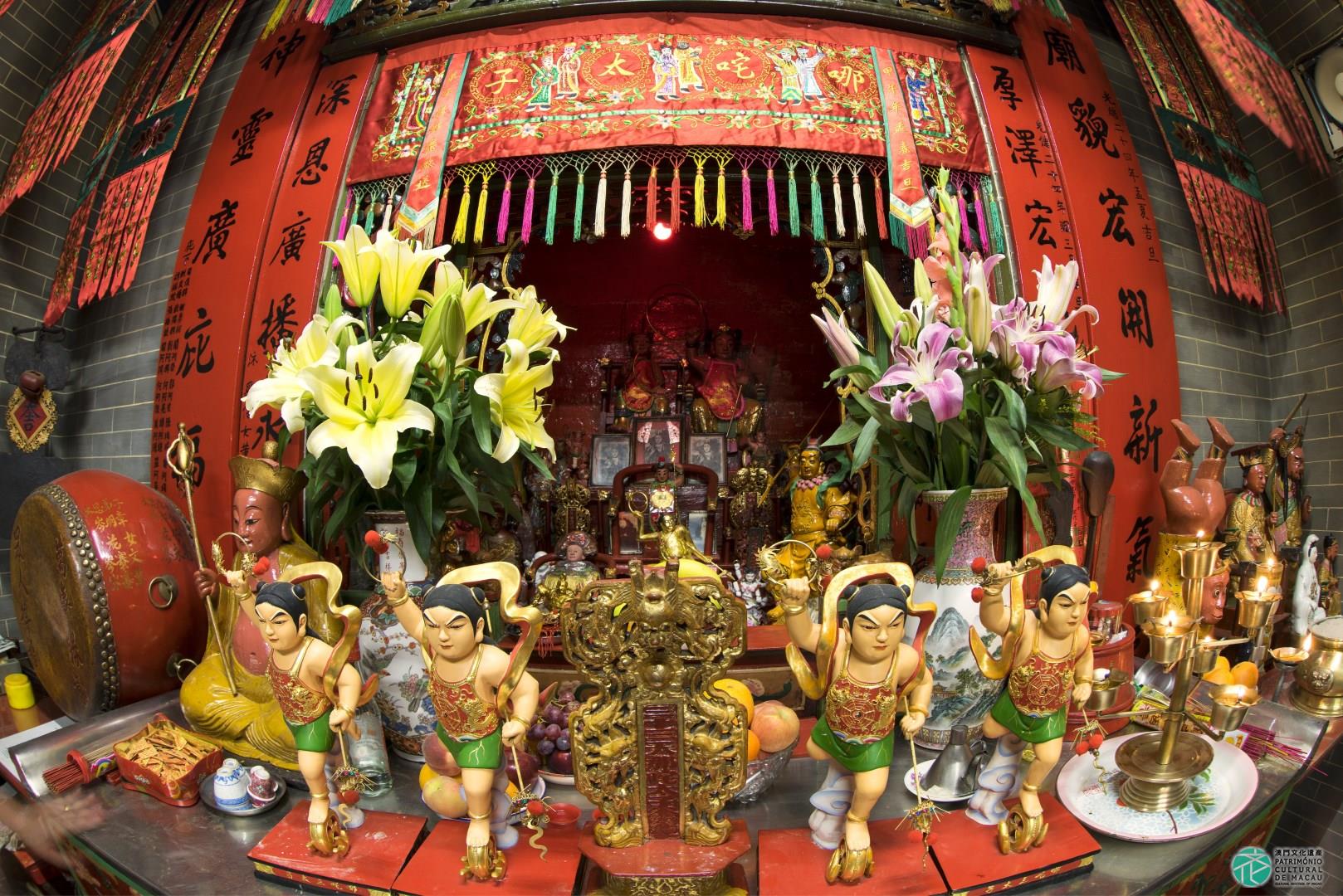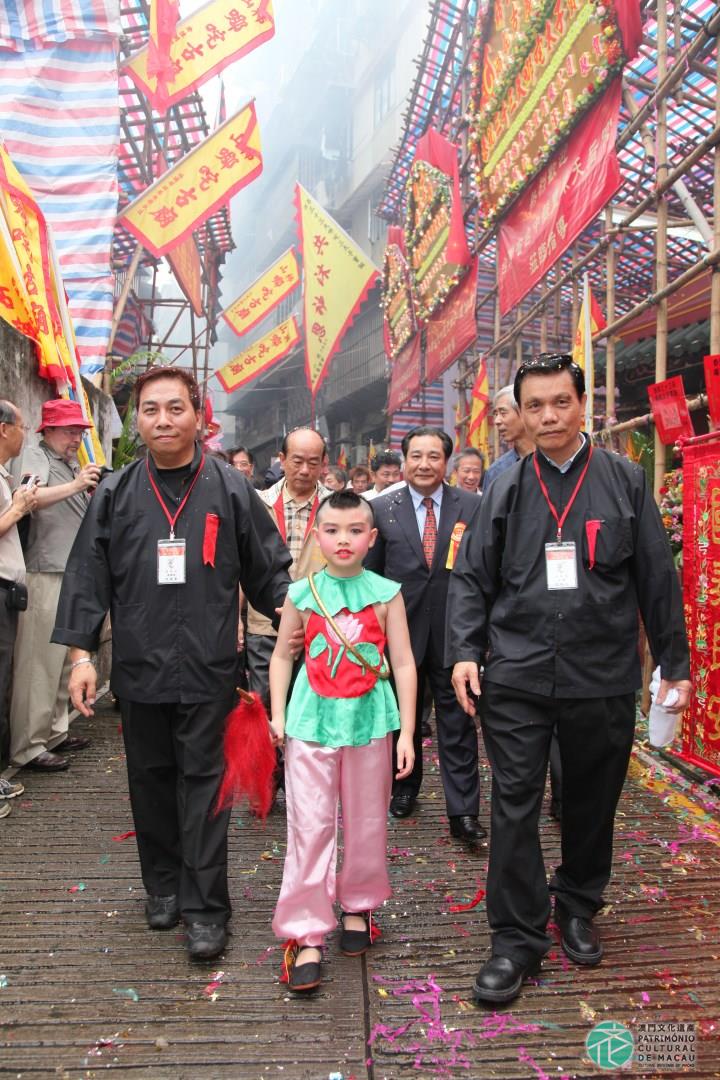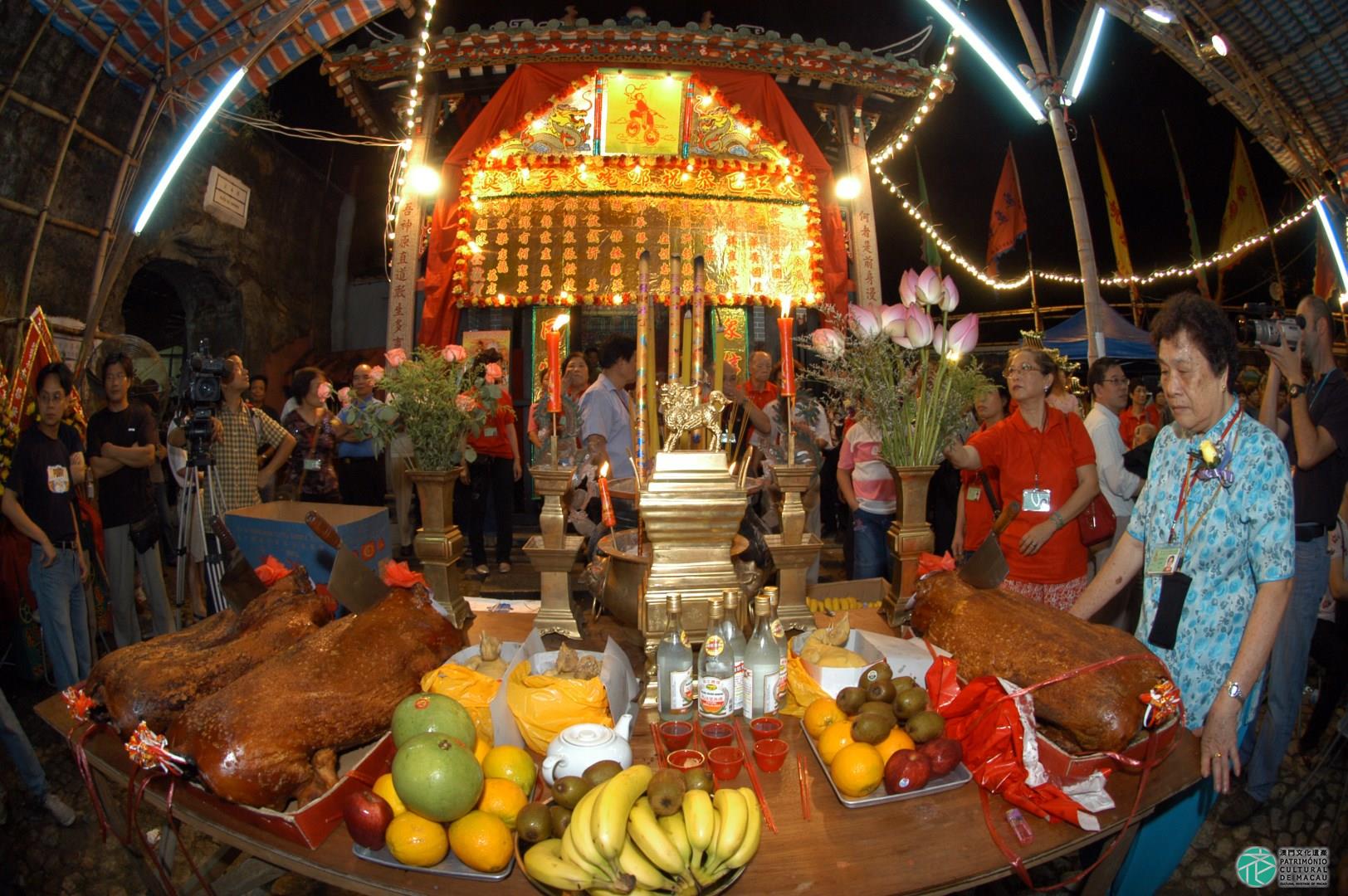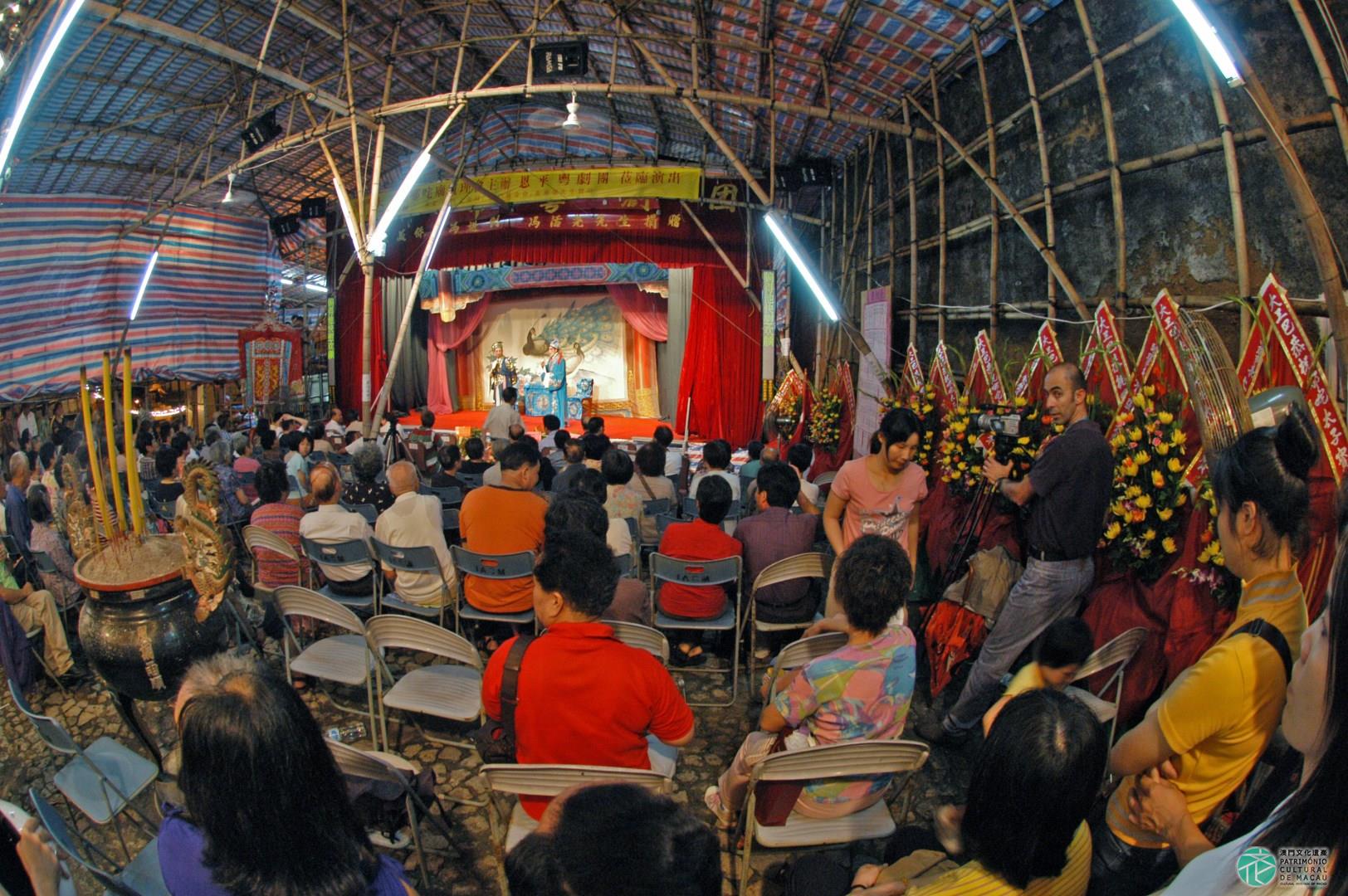A character in Chinese myths and legends, Na Tcha is depicted in the 16th-century novels Fengshen Bang (or The Investiture of the Gods) by Xu Zhonglin and Lu Xixing and Journey to the West by Wu Cheng'en as having the magical ability to dispel devils. He is often portrayed as a child with almighty powers riding on Wind Fire Wheels to drive demons and disasters from the face of the earth. Because of these special abilities, Na Tcha is called upon for help whenever there is plague, a sick child or the need for an exorcism. Indeed, Na Tcha is a well established deity in folk belief and is the patron of children.
According to legend, during the Qing Dynasty (1644–1912) a boy wearing a dudou, or Chinese breast-cloth, with his hair rolled up on both sides in two buns, was often seen playing on Mount Fortress with other children in the village, standing above them on rocks and guiding them. Despite the steep slope, no one was ever hurt. As his image was very similar to the legendary figure of Na Tcha, people believed that Na Tcha had made his presence known through this child. A temple was built on that slope in his honour.
The Na Tcha customs and beliefs of Macao stretch back more than 300 years, honouring and advocating ‘Prince Na Tcha in 33 days’. This has not only combined with folk myths, it has blended with local customs and culture, developing its own unique style. Whether legend, birthday or ritual, Macao's cult of Na Tcha has significant differences from that in neighhouring regions. Its rituals and ceremonies are quite traditional and worthy of study.
Although Na Tcha related festivities were suspended in Macao for some three decades due to political factors, those familiar with the ritual procedures remain and have retained and preserved the traditions. In addition to building altars for worship, other local folk activities include parades, children dressed as legendary and modern heroes suspended above the crowd on the tips of swords and paper fans, the making of Na Tcha lucky Tcharms and their use in divination, a firecracker-grabbing race, the distribution of ‘peaceful’ rice as a gift and Chinese opera performed for the gods and goddesses.
